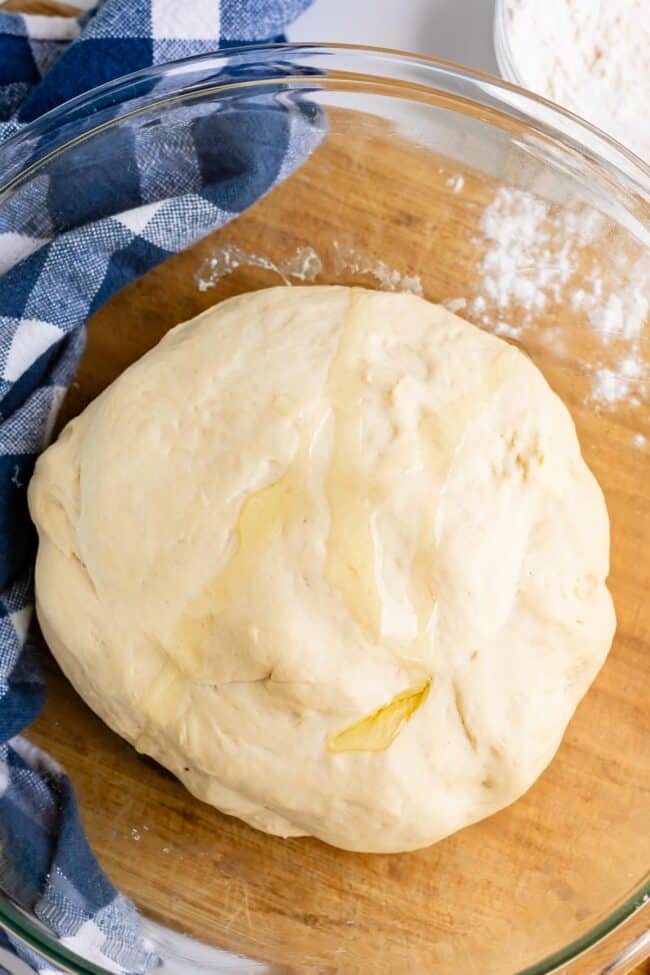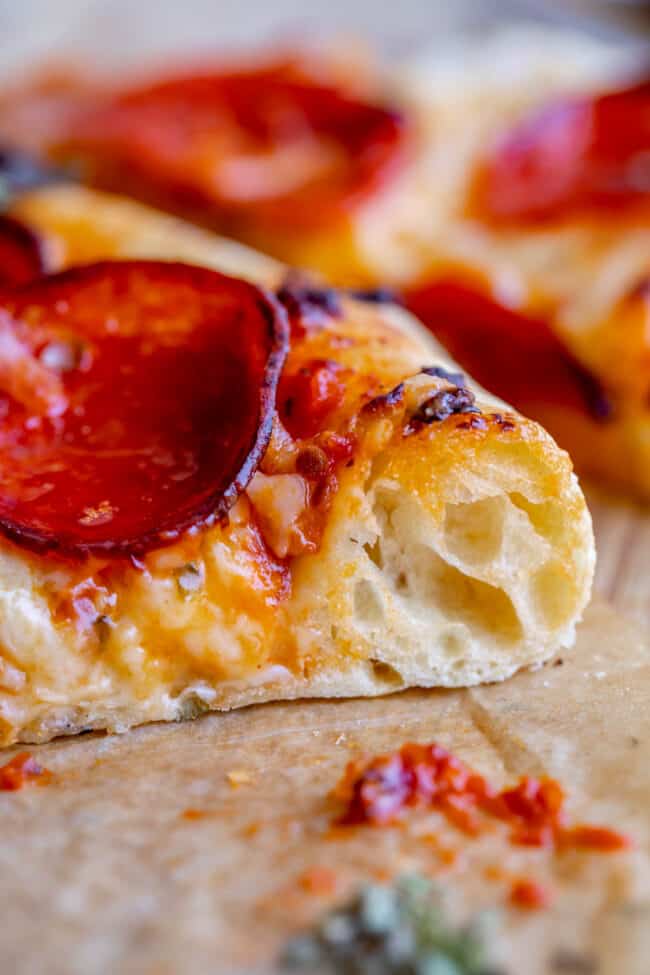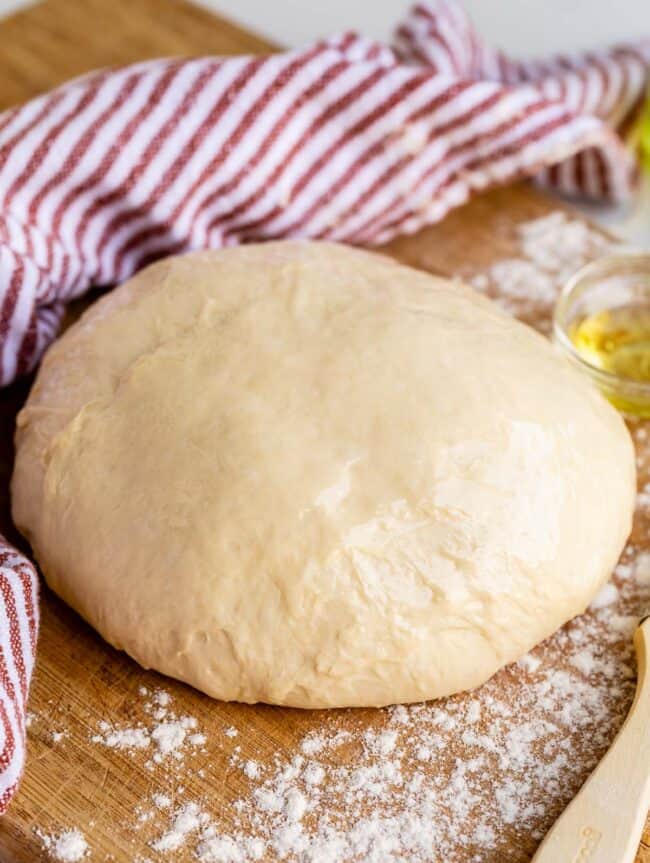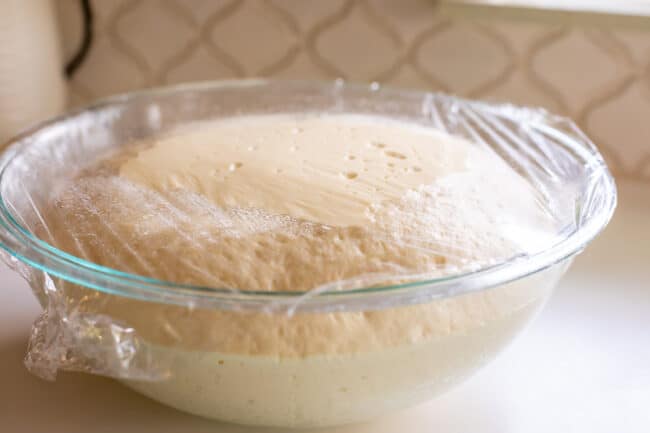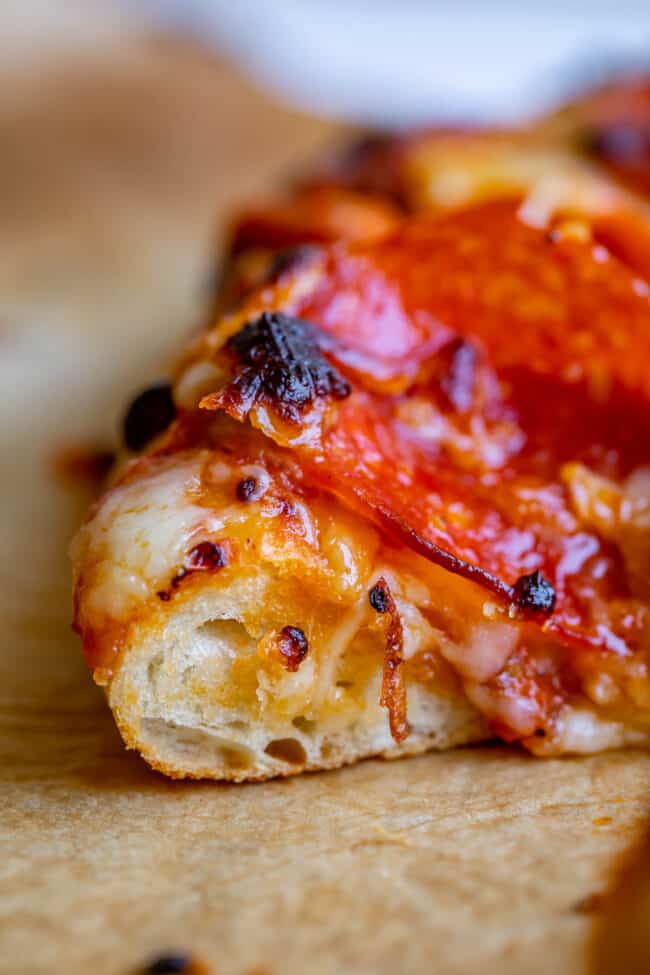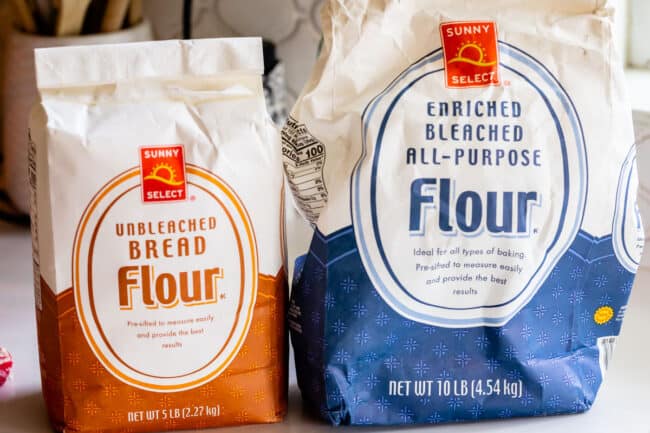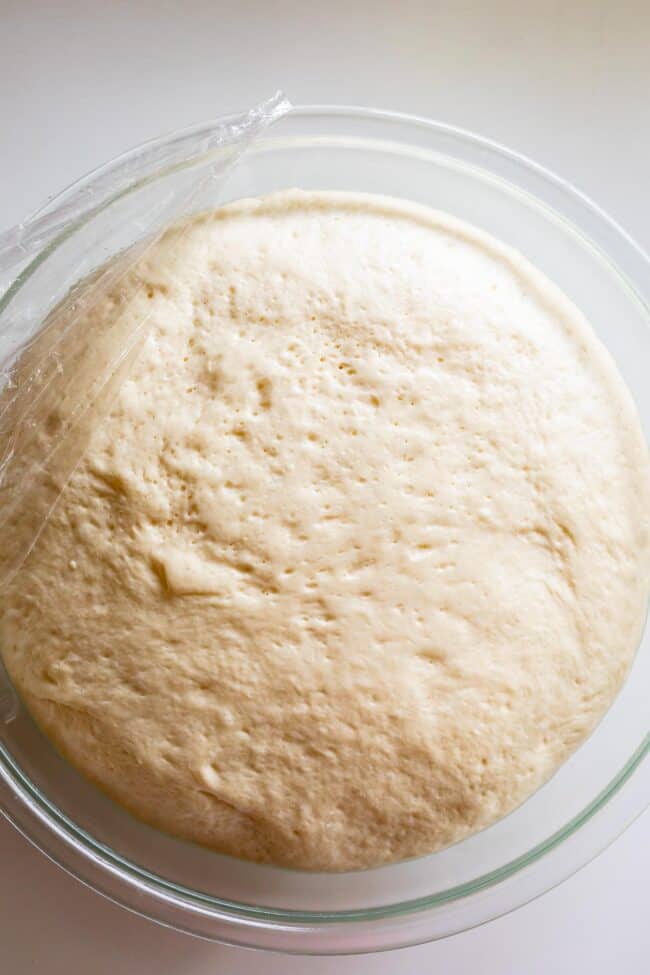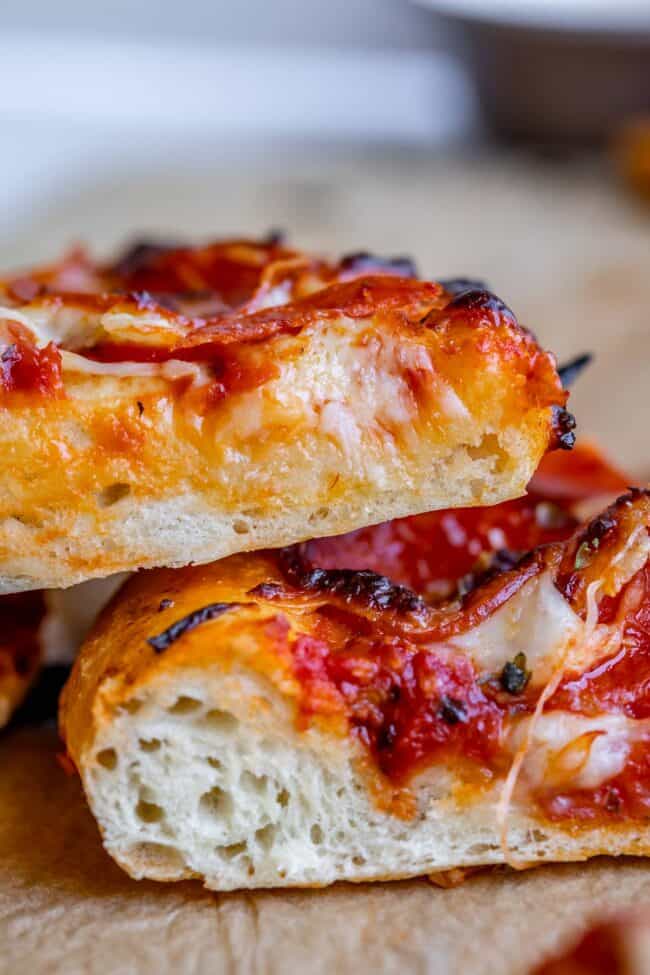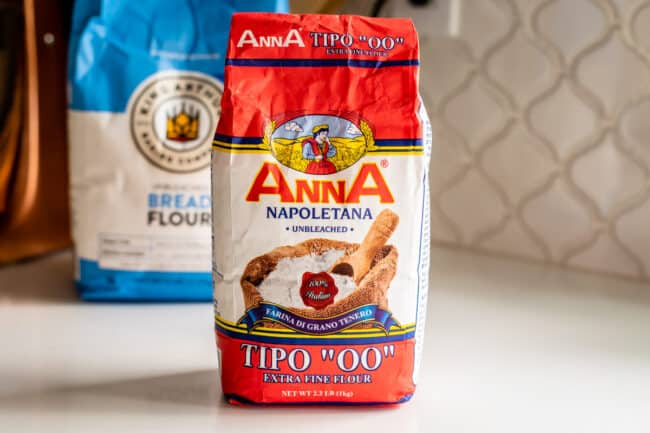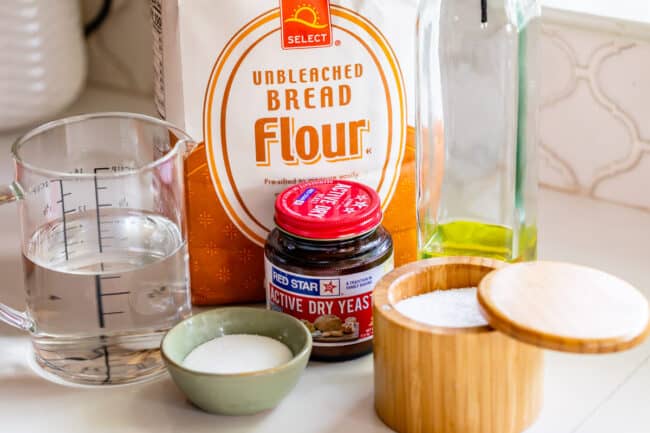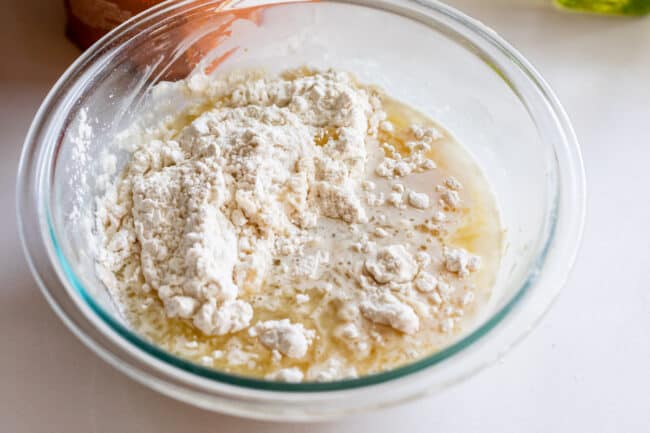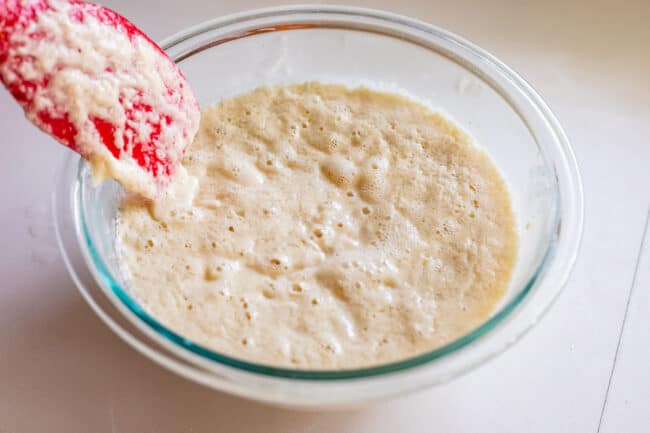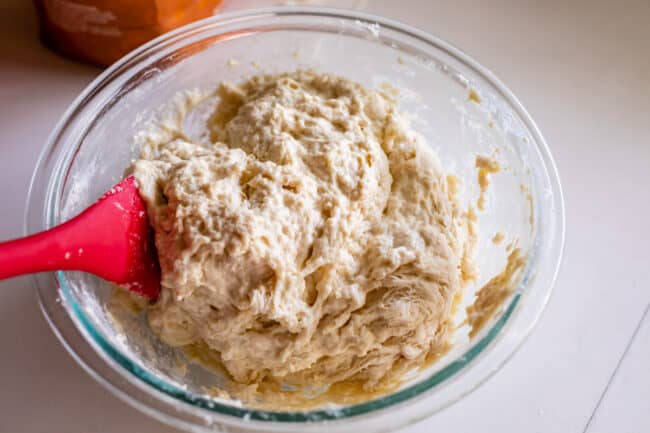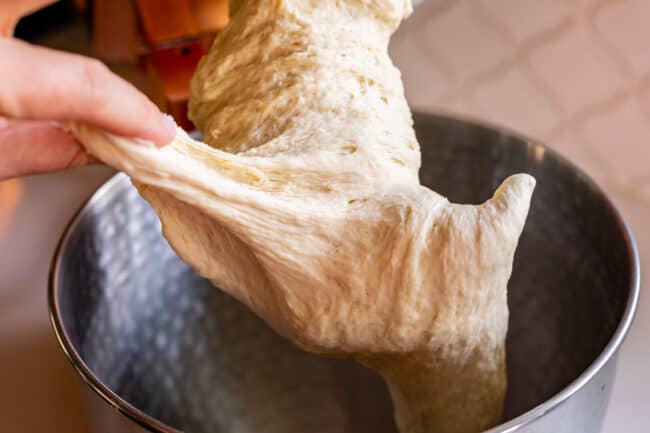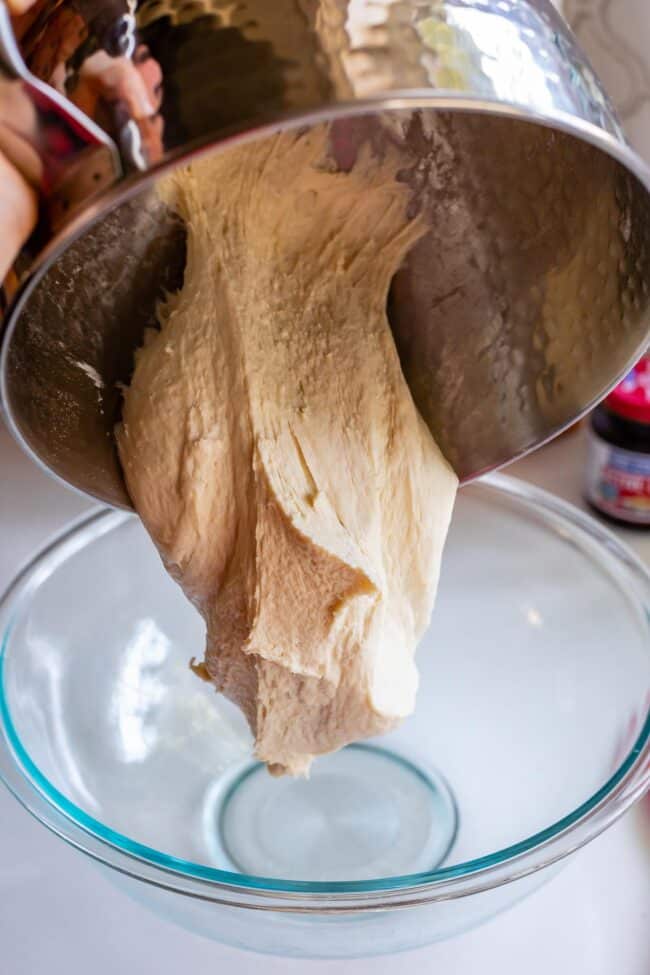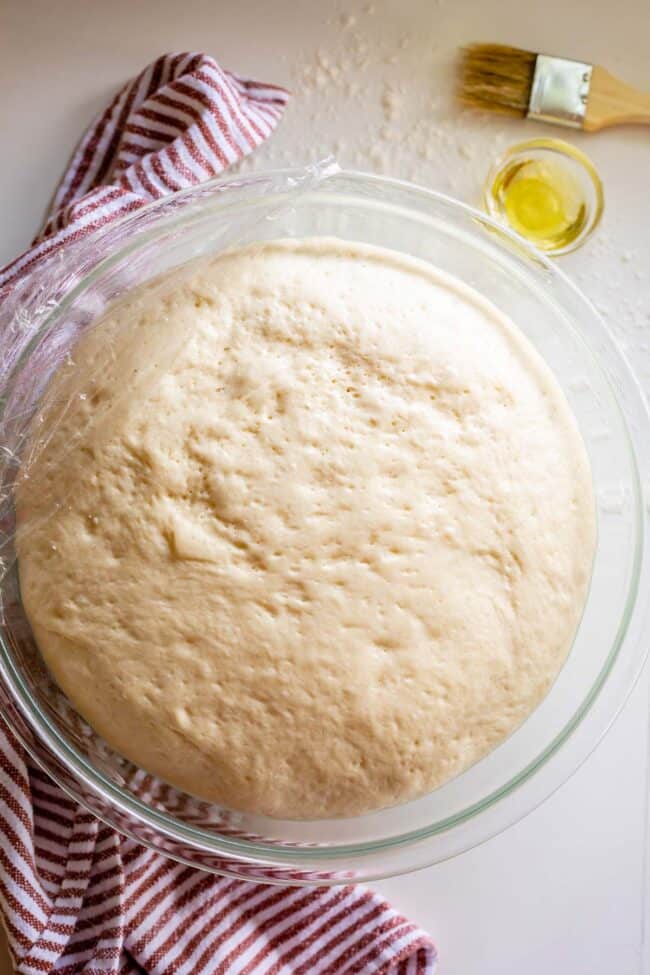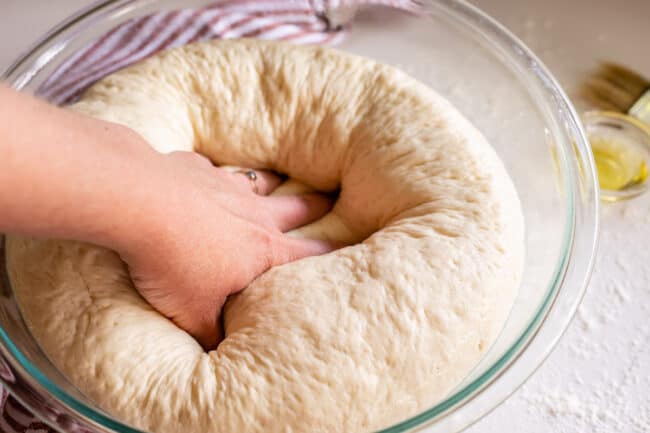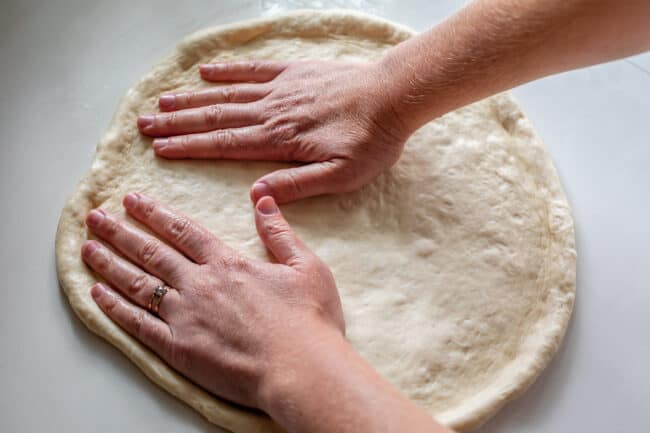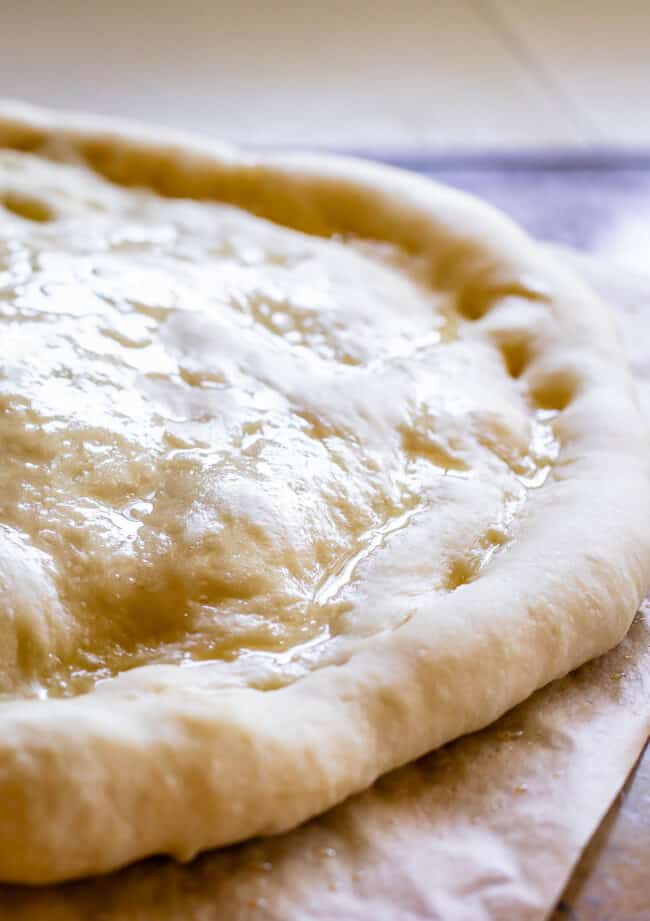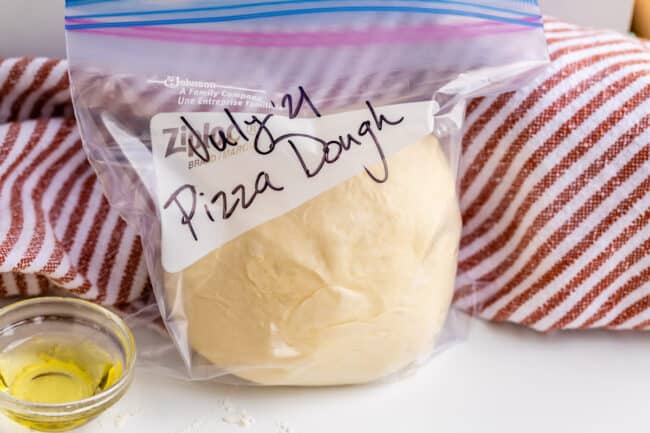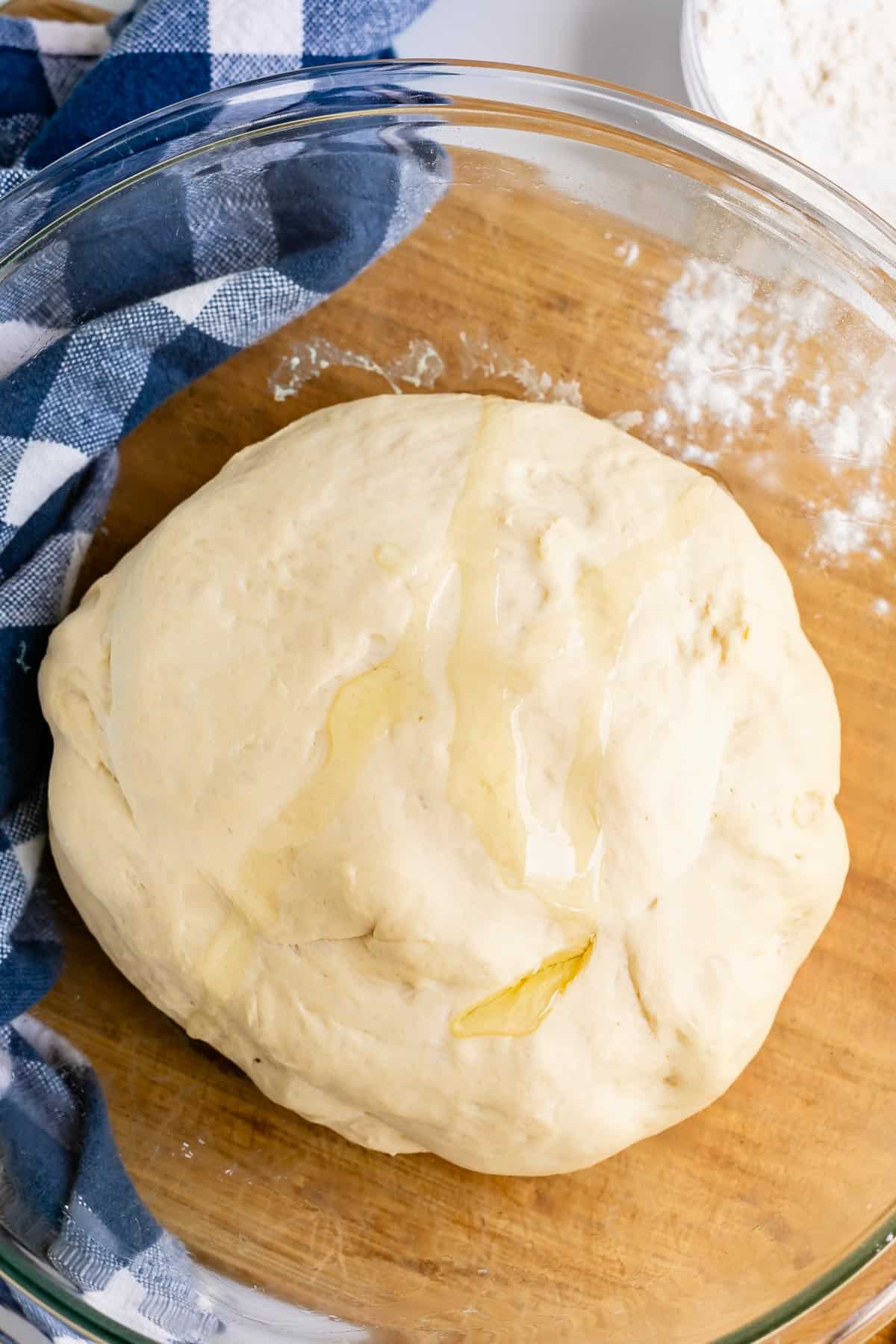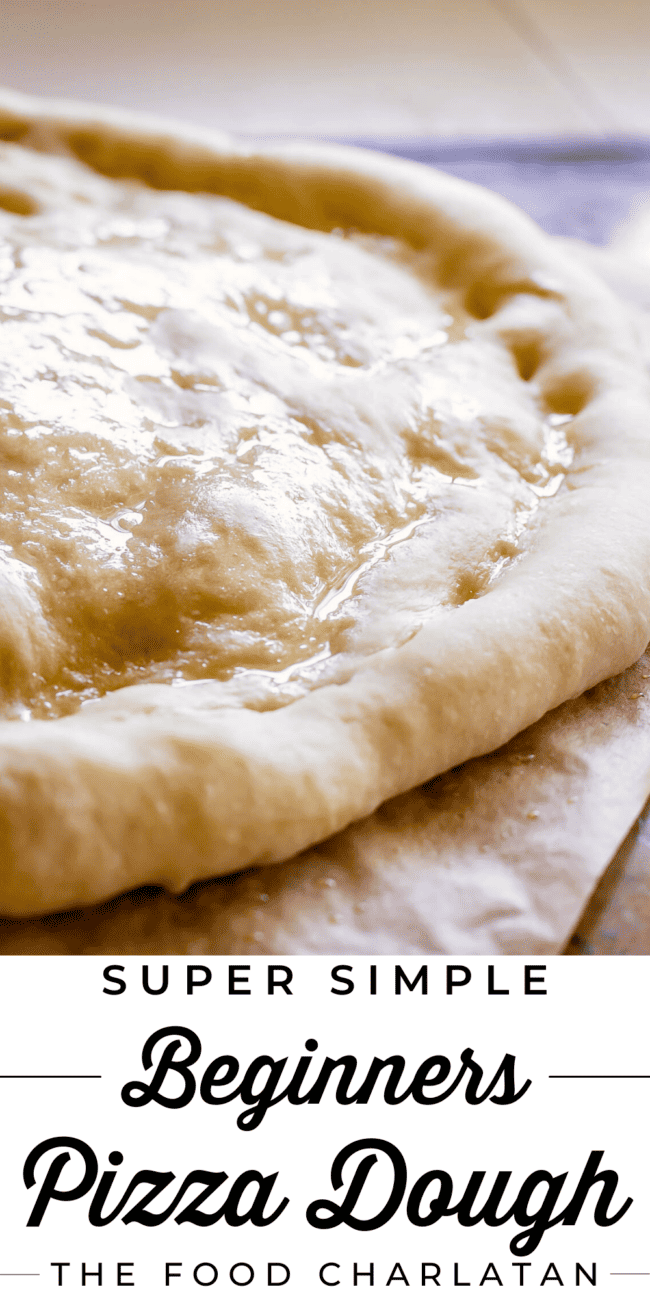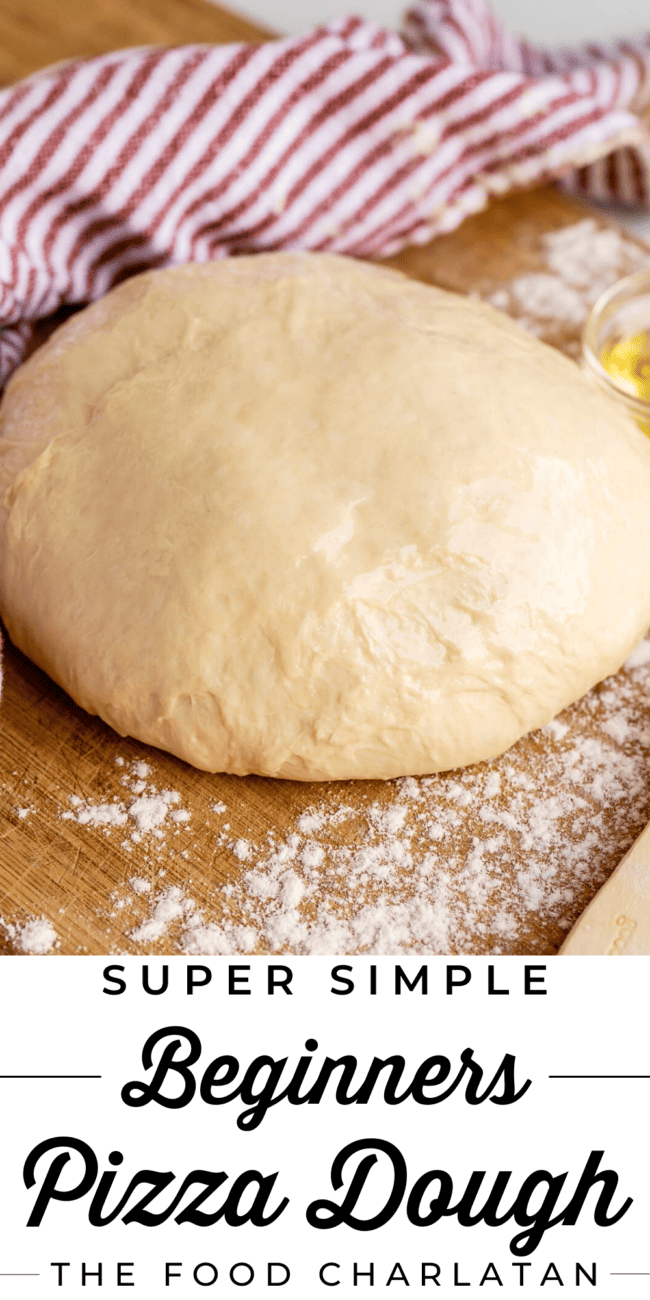The Best Pizza Crust Recipe for beginners
If you come to my house on any given day, the bathroom will be cleanish. The kitchen will have been swept within the last day or so, and the dust will be relatively under control. Shrug. What is it with men and their electronic devices, anyway? It would probably take Eric 6 months before he would notice that a toilet wasn’t getting cleaned. I don’t think he would EVER notice if I didn’t wash our sheets. But you get a tiny smudge on his phone? It’s a BIG DEAL. Eric is horrified by this. Every time he needs to do something on my laptop, he takes a moment to clean off the dust between the letters on the keyboard, and wipe the screen to clear it from all the smudges. “How do you even see what you’re doing??” Last week I got a new computer. Shiny. Immaculate. Not a speck on it. And then I did what I always do: opened it right next to me in the kitchen, where I was doing one last test on my pizza sauce. Apparently I splattered oil and bits of garlic all over it in the process. I didn’t even realize it until I went to type something later and noticed actual grease on my fingers. This is a new low, even for me. But what can I say. My quest for the perfect pizza overshadows any need for a clean computer situation. I’ve been working on my pizza recipe for months now! We have eaten so much pizza and it’s been glorious, because we all know that even bad pizza is good pizza. Today’s Pizza Dough recipe is partnered with this Pizza Sauce Recipe and this Homemade Pizza, be sure to check them out!
Ingredients for Pizza Dough
Here are the ingredients for today’s pizza dough recipe, to be baked between 475 and 550 degrees F: First things first: you need to know that the deliciousness of your pizza crust is directly related to the type of flour you use. Here are all the deets.
Best Flour for Pizza Dough
Here’s the short story: You want to use Bread Flour for pizza dough. All-purpose flour will work just fine. But it’s not as good.
Bread Flour vs All Purpose Flour
Why? (have all the skimmers moved on? We are getting into it here) Bread flour has higher protein levels than All-purpose flour. Protein is what you need to form gluten. Gluten is this magical thing that forms when you knead flour and water together. Sheets of gluten trap and hold gases made by yeast. It is the framework that allows bread to rise. Without the framework of gluten, the gases from your yeast will escape and float away, and your bread (or pizza dough!) won’t rise. (This is why gluten-free baking is so tricky!) But what the heck, pizza crust doesn’t even need to rise that much. It’s flat, right? Why are we using high protein flour? Well, first of all, it DOES rise, at least for a little while, if you want it to taste good. Gluten development = flavor development. But the other thing protein provides is strength. Gluten is STURDY. Imagine eating a piece of pizza with a crust the texture of cake. It would fall apart, right? It wouldn’t even be able to hold up all that sauce and cheese! The more protein you have in your flour, the more strength your crust will have. We need a good sturdy pizza crust, not a wimpy sponge.
Cake flour has the least amount of protein (9%) (that’s why we use it to make delicate, light cakes!) All-purpose flour has a middle amount of protein (11% ish). It’s good for most projects and can be used to make cake and bread (and pizza dough!) Bread flour has the most amount of protein (13%), meaning it can form the most gluten, which gives the final product a sturdier, chewier texture. Great for bread, which needs to rise super high. Great for pizza crust, which needs to hold up a bunch of toppings.
On top: pizza crust made with All-Purpose flour. Do you see how it’s all the same level? On bottom: pizza crust made with Bread flour. You can see that the edge crust puffed up way more than the chewy center part of the pizza. Maybe this is something you have to taste to understand!! If you make pizza dough with All-purpose flour, what happens? You will get a totally passable pizza crust that is a little fluffier than what you are used to. It’s going to feel a little more bread-like, rather than pizza-like. Pizza crust should be chewy, textured, crisp-on-the-edge-and-bottom, and pillowy-tender (but thinner) in the middle. The only way to get this glorious texture is by having more protein. Use the Bread flour.
What about 00 Flour?
Can we make this flour discussion even more complicated please? If you do any amount of research on pizza dough recipes, you will see many calling for “Double Zero” flour (00 Flour), a specialty Italian flour that is ground much finer than the kinds you find in the United States. (In the US, we differentiate flours by protein levels; in Italy, they differentiate flours by how coarsely they are ground.) 00 Flour actually has similar protein levels to American Bread flour. The finely ground texture of 00 Flour makes amazingly delicious “Neapolitan” style pizza crust. It is the kind of texture you will find at your favorite artisanal pizza place (as opposed to Dominos or Pizza Hut, no shade intended, I will eat pan pizza til the day I die.) Sometimes when I am feeling extra, I will make today’s recipe using half Bread flour and half “00” flour. It definitely tastes amazing and has a different texture. I’m not calling for it in the official recipe because it’s not a common ingredient in American markets; you usually have to go to a specialty store or order 00 Flour online. But if you want to make your pizza crust totally next level, it’s worth the investment! See recipe notes for details.
How to make Pizza Dough
(See recipe card below for full instructions) First we’re going to add our warm water and yeast to a large bowl. Make sure the water is not too hot! You don’t want to kill your yeast. It should be nice and foamy after a couple minutes. (if not, it’s dead!) Here is the yeast just added to the warm water, and then on the right is a picture 5 minutes later. Nice and foamy. Not dead.
Homemade Pizza Dough: the Sponge Method
Have you ever heard of the Sponge Method for making bread (or in today’s case, pizza dough)? It’s where you mix some (but not all) of the ingredients for your dough and let it sit for a while before adding the rest and kneading. In today’s recipe, you mix the water, yeast, sugar, and only 1 cup of flour. Then let it sit for anywhere from 30 minutes or up to 3 hours. That’s it! This is different from the Straight Method (which is the most common way of making pizza dough or bread: mixing together all the ingredients and kneading them right away.) Why sponge? It’s all about improving the flavor of your final crust. It also helps provide a more interesting texture for your pizza. Time is key. Feeding yeast with warm water, sugar, and flour gives it time to ferment and produce even more yeast and natural sugars. Fermentation=flavor! (People are always worried on recipes like this that they need to put their project in the fridge. NO! The whole point is that it’s fermenting. Coldness would slow it down. Americans are obsessed with refrigeration!) Can you skip the Sponge step? Absolutely! I have instructions for both the Sponge Method and the Straight Method (the “normal” way) in the recipe below.
How to knead this Easy Pizza Dough
If you choose not to use the Sponge method, it’s even more simple. Once you have made sure your yeast is not dead, add in all the rest of the ingredients, adding the flour one cup at a time and stirring in between. Here is the dough with about 3 cups of flour stirred in. At this point, if you are kneading in a stand mixer, switch to the dough hook. If you are kneading by hand, generously flour a work surface and use your hands to add the rest of the flour. Knead the dough for about 5 minutes in a mixer, or about 7 minutes by hand. You want to make sure that the dough is constantly moving and folding back on itself; this is what helps mesh together all the protein in the flour with the water we’ve added, creating gluten! That magical thing. When you are done kneading, your finished dough should be smooth, elastic, slightly sticky, and soft. It should not feel tough. When you grab a piece and stretch it out, it should stick to your fingers a bit and stretch. If it is dry and breaks after just a short pull, you’ve added too much flour.
How long to let pizza dough rise: Flavor vs. Time
20 minutes. Or 12 days. Here’s the thing about this pizza dough recipe: just like any classic, there are literally endless ways you can make it. Ask an Italian and they will tell you their 12 day process (I’m joking) (kind of). Ask Betty Crocker, and she will give you her 10 minute recipe. You are going to get pizza dough and a passable pizza crust at the end of both recipes. One is just going to taste a lot better! Here’s what I want your takeaway to be on any pizza dough recipe: you can make it as short of a process or as long of a process as you want. Generally speaking, the longer you wait (sponging, rise time, etc.), the better tasting your resultant crust will be. Just check out this 4 hour Cast Iron Pizza recipe for proof. (It really tastes like Pizza Hut Pan Pizza. It’s amazing!) Or you can go from zero to hot pizza in your mouth in ONE HOUR using today’s recipe, with just one 20 minute rise for the dough. (I promise, it’s delicious…even though it hasn’t realized its full potential!) Or, you can take your time, use the Sponge method for 3 hours, let it rise for 2 hours, take it out to dinner, give it a nap, let it rise again, and then bake. Or, you can let it rest overnight in the fridge to develop flavor. All using this same recipe. It’s very forgiving and adaptable. Don’t let anyone tell you there’s only one way to do pizza dough. I am a busy mom. Sometimes I skip the sponge step and only do a 20 minute rise because I got hangry people all around me. Sometimes when I’m on top of my game, I’ll start the process in the morning, do a sponge, then let it rise all day, punching down periodically. The longer you wait, the better it tastes.
How to roll out Pizza Dough
I like to do it by hand! It’s easier to shape the edges of the crust that way. But you can use a rolling pin if you want. I have lots of tutorial pictures for how to roll out the dough on my Homemade Pizza post. My one recommendation for rolling out pizza dough is to dust your surface with only a small amount of flour. Extra flour can make your dough tough. In fact, I like to rub my work surface with oil instead of flour. But either way will work! My other tip is to partially bake (this is called par-baking) the dough before you add toppings. It makes a huge difference and gets you the crispiest crust! Check out this Homemade Pizza Recipe for all the details.
How to bake this Pizza Crust Recipe
Par bake (Optional).
Once the oven is up to temperature, we are going to do a 1 to 2 minute par bake. This step is technically not necessary, but I never skip it. It guarantees not only a thoroughly cooked crust, but a nice and crispy one. Nobody wants a doughy pizza, yuck. (If you want to skip it, you can proceed with topping your pizza).
Bake.
Best Pizza Dough Recipe tips
The best way to get a super flavorful pizza dough is to allow a lot of time for fermentation and gluten development, as discussed above. Here’s how to do it:
Make a sponge and let it sit for up to 3 hours (yeast development=flavor) Knead your dough very well to help form gluten. Gluten=flavor. Let your dough rise once, twice, three times! See recipe. The longer it has to ferment, the more flavor there will be in your dough. If you are in a hurry and don’t have time for these steps, a last ditch effort to add flavor is to knead herbs into your dough (oregano, basil, thyme). You could even try adding a bit of parmesan. Another last minute idea: before and after parbaking your pizza crust, brush it with olive oil that you have mixed with a bit of garlic powder, oregano, and basil.
Pizza Crust Recipe storage
Can you freeze Homemade Pizza Dough?
Yes! I freeze pizza dough all the time. It works like a charm. Separate the dough into 2 balls (for faster thawing). Place the kneaded dough (no need to rise first) in 2 labeled ziplock bags and freeze for up to 3 months. See recipe for overnight pizza dough instructions!
How to defrost Pizza Dough
Let thaw on the counter or in the fridge. Once it is completely thawed, let rest at room temperature at least 1-2 hours before rolling out. (I’ve even tried the hack of putting the well-sealed bag of frozen dough in a bowl of warm water to speed up thawing. Works great. Just make sure once it’s completely thawed, you give it plenty of time to rest/rise.)
How to parbake pizza dough for grab-and-go make-ahead pizzas
If frozen pizza is your thang, you can totally make it happen with homemade dough. Here’s how it’s done!
Easy Pizza Dough sister posts: the sauce and putting it all together
I hope this post answered all the questions you’ve ever had about pizza dough! Don’t forget to check out the two sister posts to this recipe: Easy Pizza Sauce and Homemade Pizza, where we put it all together. It was too many steps to fit all this info here! (Pizza is serious business.) The Homemade Pizza post picks up right where this one leaves off. I’ll show you all my rolling out the dough tips, discuss pizza stones vs. normal pans, talk toppings, and more!
More pizza to love:
Cast Iron Pan Pizza « this tastes exactly like a Pizza Hut Pan Pizza. No lie. Blackberry Ricotta Pizza with Basil « it might be unconventional but I’m telling you, this pizza is legit. Easy No Cook Pizza Sauce « here is a really fast and easy pizza sauce recipe that requires no cooking or blending! Just dump and stir. Easy Pizza Casserole « all the flavors you love…in a pan! Hot Dog Pizza with Caramelized Onions « this recipe might sound weird but I’M TELLING YOU it’s so good! Thai Pizza with Zucchini and Pickled Onions « like the one at California Pizza Kitchen! Classic Stromboli Recipe « pizza, all rolled up and baked. Hawaiian BBQ Chicken Pizza from Pitchfork Foodie Cheesy Pepperoni Pizza Sticks from I Wash You Dry Pizza Quesadilla Recipe from The Girl Who Ate Everything
Facebook | Pinterest | Instagram
